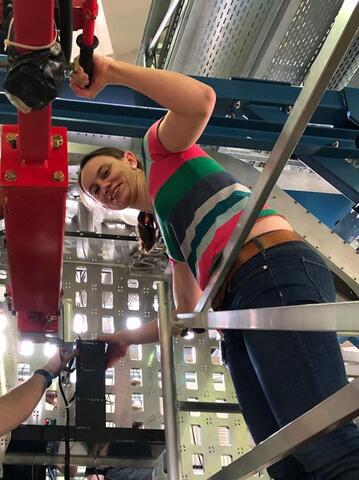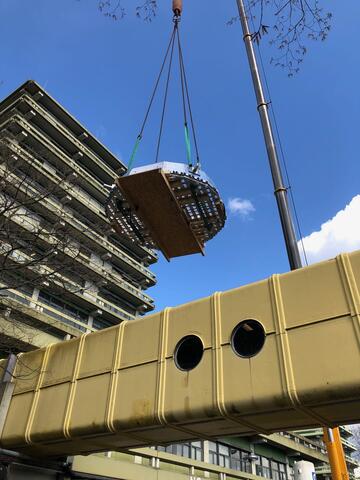Workshop „Physics Opportunities with Proton Beams at SIS100” was held in Wuppertal
PANDA meetings
04/03-08/03 2024 CM 24/1 in Münster
24/06-28/06 2024 CM 24/2 at GSI
25/06-26/06 2024 FEE/DAQ Workshop
04/11-06/11 2024 CM 24/3 at GSI
05/03-07/03 2025 WS at GSI
16/06-20/06 2025 CM 25 in Uppsala
Systematic studies of micro-channel plate PMTs
A. Lehmann et al. (PANDA Cherenkov Group)
PA-PRO-2011-004.pdf
(312.26 KB)
DIRC Cherenkov detectors will be the main devices for pi/K separation at the PANDA experiment at
FAIR. Due to their advantageous properties in terms of time resolution and especially inside magnetic
fields micro-channel plate photo multipliers (MCP-PMTs) are very attractive sensor candidates. In this
paper we present the investigation of several types of multi-anode MCP-PMTs. The darkcount rate, the
behavior inside a magnetic field of up to 2 T, the time resolution, the gain homogeneity and crosstalk of
multi-pixel MCP-PMTs were found to be well suitable for the PANDA requirements. Even the rate
capability of the latest models from Burle-Photonis and Hamamatsu is satisfactory. Although a big step
forward was accomplished with these recently available MCP-PMTs, the lifetime is still not sufficient for
the photon densities expected for the PANDA DIRCs.
FAIR. Due to their advantageous properties in terms of time resolution and especially inside magnetic
fields micro-channel plate photo multipliers (MCP-PMTs) are very attractive sensor candidates. In this
paper we present the investigation of several types of multi-anode MCP-PMTs. The darkcount rate, the
behavior inside a magnetic field of up to 2 T, the time resolution, the gain homogeneity and crosstalk of
multi-pixel MCP-PMTs were found to be well suitable for the PANDA requirements. Even the rate
capability of the latest models from Burle-Photonis and Hamamatsu is satisfactory. Although a big step
forward was accomplished with these recently available MCP-PMTs, the lifetime is still not sufficient for
the photon densities expected for the PANDA DIRCs.





